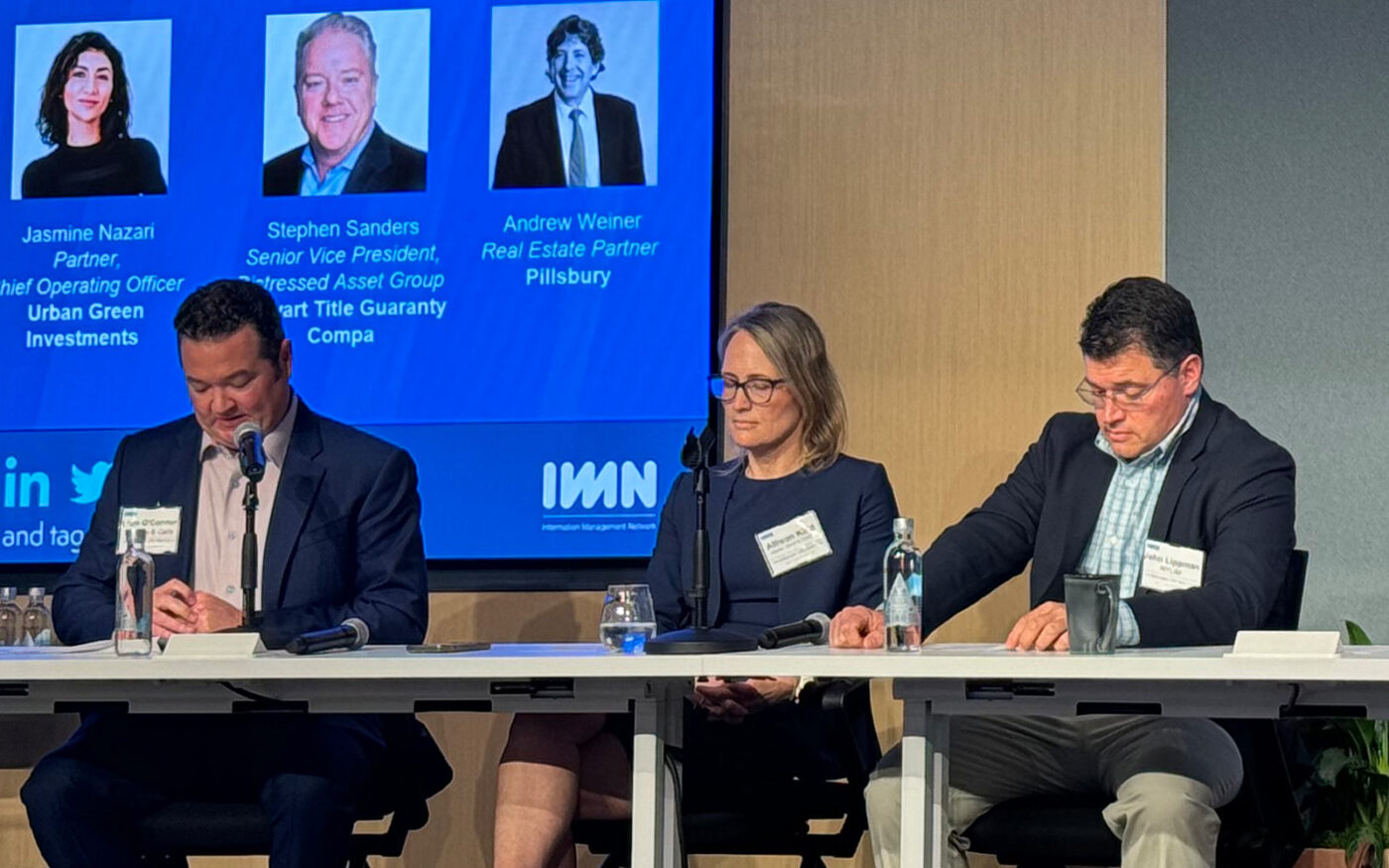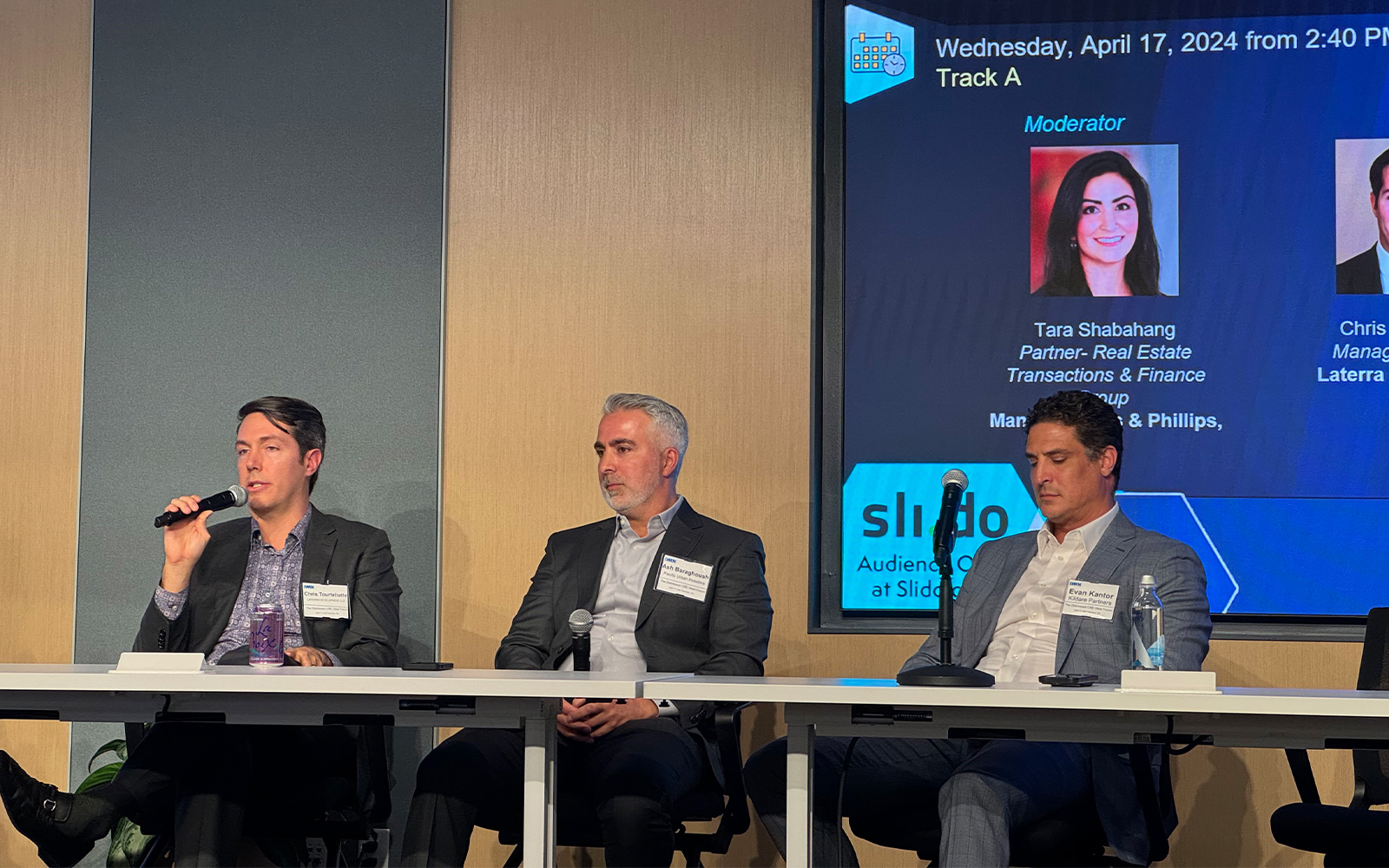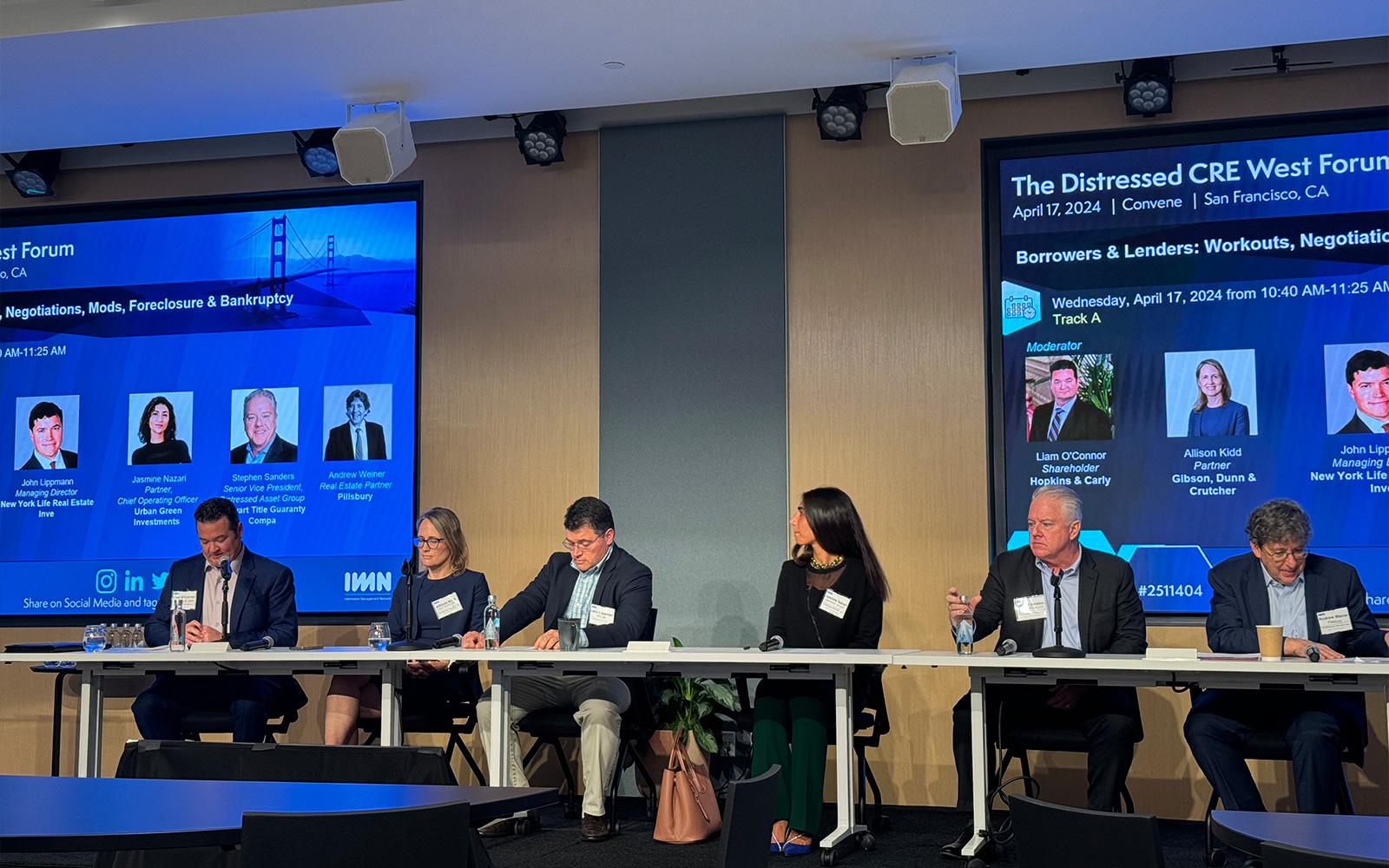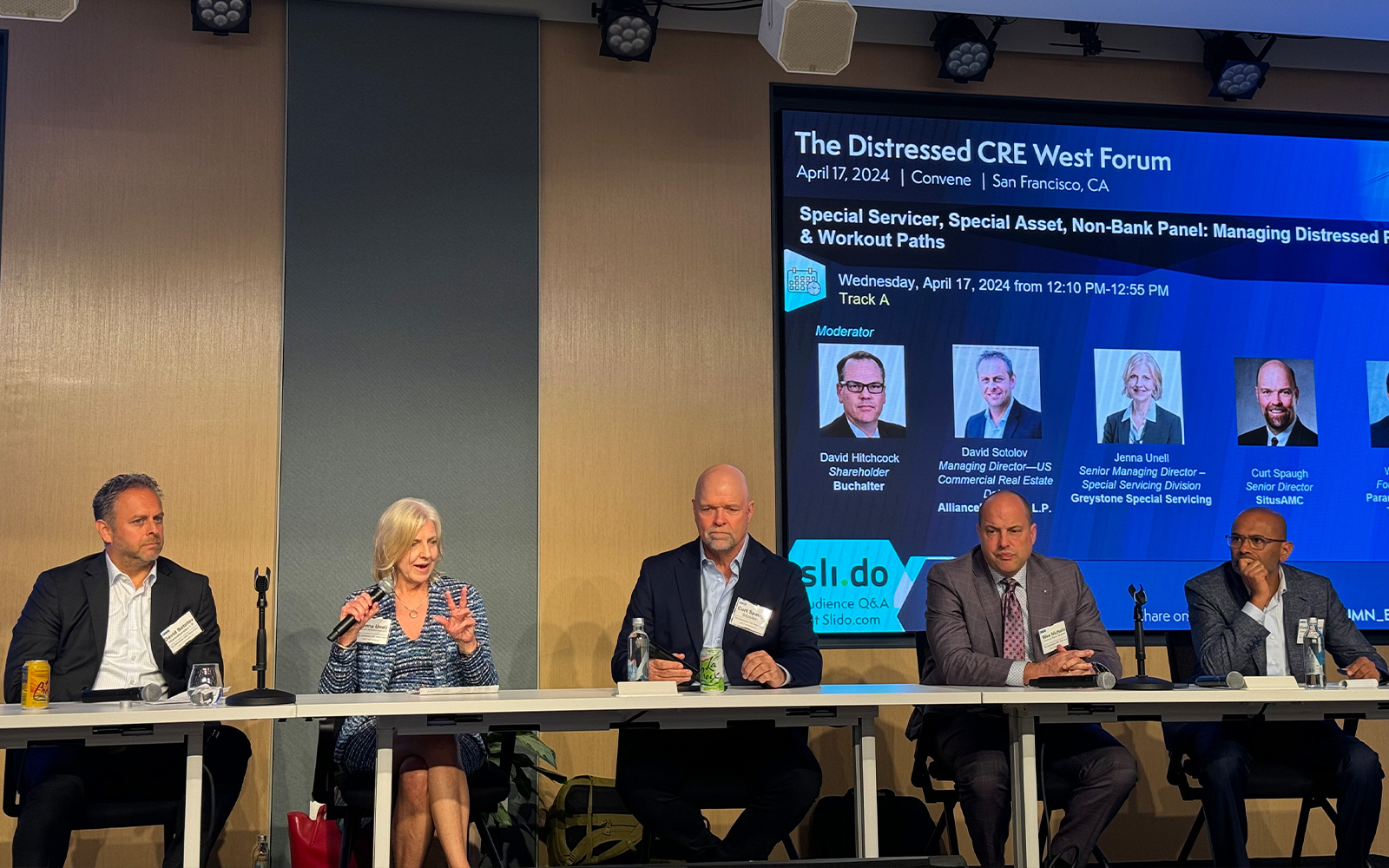Case-by-case workouts on troubled loans are staving off a wave of foreclosures, experts said at a panel on distress held in downtown San Francisco this week.
“For borrowers who are being upfront and proactive, we’re going to do everything we can to try and work with you,” said Kelly Nealis, who runs investments for owner-operator and lender CIM Group.
Nearly 300 attendees from up and down the state attended the day-long event, hosted by IMN and held at Convene on Wednesday, which marked the largest distress forum the real estate conference organizer has thrown in this downcycle, according to a conference representative.
The upfront and proactive piece of the equation is key for workouts, many lenders and servicers agreed, especially if borrowers have a clear plan for how they plan to fix the problem.
“If you go to the lender and say, ‘We’re not sure what to do,’ that’s the beginning of a very painful conversation,” John Lippman, who runs structured debt at New York Life Real Estate, said.
Often, when borrowers face trouble, they clam up or even start ignoring the property.
That can make the lender lose faith and wonder if the owner is really the right steward for the property, said Khalil Yearwood, an attorney at law firm Gibson, Dunn & Crutcher, who often represents lenders.
“Once the clock’s up, the lenders are willing to take back the properties and put in different operators unless they think they already have the number-one best operator in the market for that asset,” Yearwood said. “You might as well switch horses and have the upside.”
The caveat to the workout trend is that the lender might be leveraged. How much and who they owe has a huge impact on their ability to get creative with their borrowers.
Borrowers rarely think to ask about how lenders are capitalized, especially during boom times, “but it turns out it actually matters, said David Sotolov, an executive on global asset management firm AllianceBernstein’s commercial real estate debt team.
“If you’re borrowing from a lender that’s leveraging their loan, it’s really hard to have a two-party negotiation with your lender because there’s another party involved that’s going to influence those negotiations,” he said.
The panelists also weighed in on investors pooling capital hoping to pick up distressed properties at bargain rates. Because so many banks are choosing to work out troubled loans, the wave of foreclosures that many expected hasn’t happened, making it tough for investors to find distressed, but good, deals to put money towards.
“Pro tip — if you’re a developer, try to find that distress when you’re pitching it to capital, because they all want distress,” said Chris Tourtellotte, who heads up development at Los Angeles-based multifamily and industrial firm LaTerra Development. “To the extent you can wrap it in distress, I think capital is a lot more interested, whether or not that impacts yields.”
He said his investors want a 20 percent gross return for ground-up development and somewhere in the low teens for multifamily properties.
Pacific Urban Investors executive Ash Baraghoush said “opportunistic” buys have been slow, but his firm, which focuses on investing in multifamily, has made a few core apartment buys.
Instead of buying properties, he said, private credit is “perhaps the place to play where you can get an appropriate return.” His company has put about $150 million into preferred equity for development recapitalizations and acquisitions in the last 18 months, he said.
Multifamily and retail seem to be two asset classes that investors are most optimistic about, according to panelists, though Evan Kantor of L.A.-based Kildare Acquisitions said most multifamily deals don’t make sense for his opportunistic fund.
“I have to be able to buy cheap, cheap, cheap to get my return” on retail, Kantor said.
The time may be right to pick up deals in the assisted living sector, he said, and he wouldn’t turn away the right office property.
That’s “if you can get an office deal past the investment committee,” he said, referring to the fact that many lenders and investors have redlined office product.
“We’re buying in the best of the out-of-favor type of assets, that’s where you find that opportunity,” Kantor said.
All the panelists agreed that the office market had been the hardest hit sector, but B or even A-minus properties have limited appeal in a bifurcated market ruled by flight to quality.
“It’s really deal specific at this point in the market,” Kantor said. “Most investors are saying, ‘Hold out for the good stuff.’”
Read more







